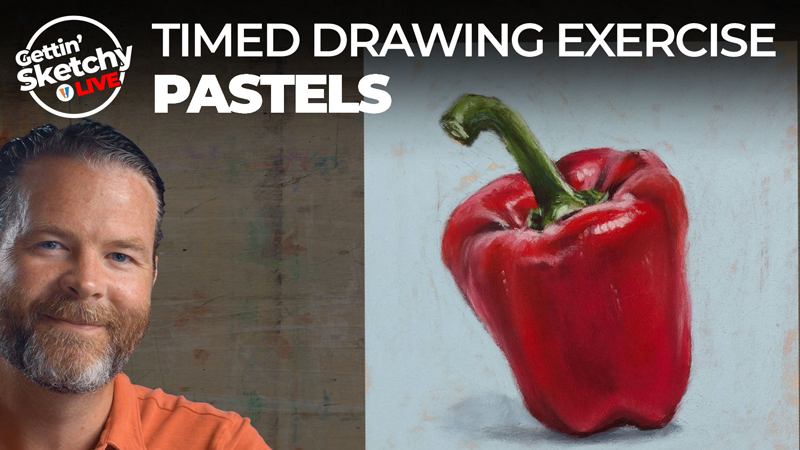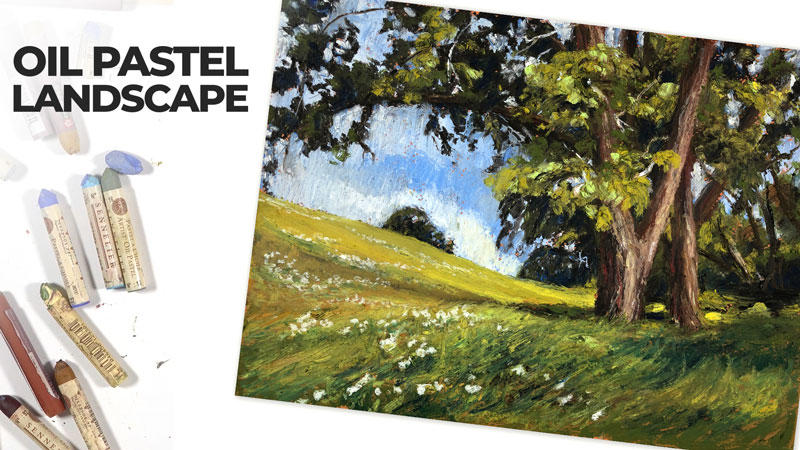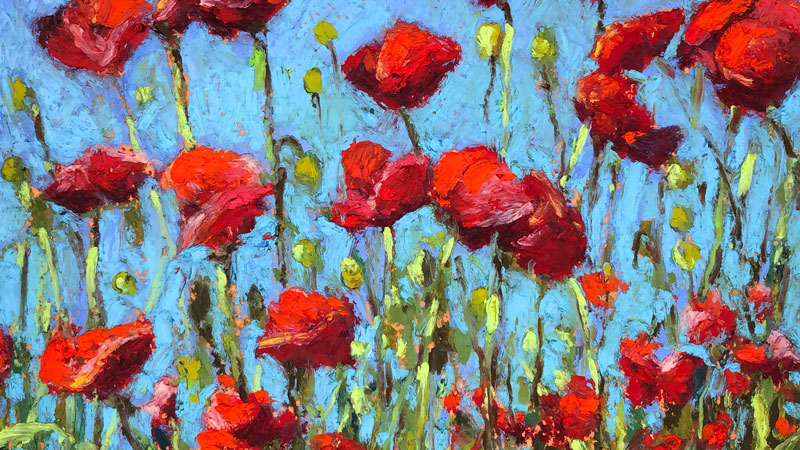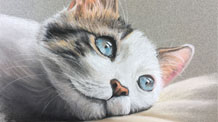Gettin Sketchy – Drawing a Colorful Cat with Oil Pastels – Season 2 Episode 10
This episode aired live on YouTube on October 21, 2020.
In this timed drawing exercise, we explore drawing a colorful cat with oil pastels on black paper. Instead of copying local colors (observed colors), Ashley uses creative colors to make the drawing more lively and interesting. We had some fun with this broadcast, to say the least.
Getting Creative with Colors
The natural world around us is full of wonderful colors. And when realism is our goal, we often try to match the colors and values that we see. Matching colors (or coming close to matching colors) and more importantly – values, often leads to realistic results. However, many artists find natural colors limiting and are more excited by pushing color relationships in a drawing or painting. In this drawing, Ashley takes this route, incorporating exciting colors to an oil pastel drawing.
Matching colors in a drawing or painting is fairly straight-forward. You see a color and then either use a matching pre-mixed color or mix your own. Of course, adjusting the value and intensity is also important in accurate matching. When you branch out and create your own colors as substitutes, the process can be a little mysterious – but there is a little secret.
This little secret lies in value. Value is the darkness or lightness of a color. It is the most important of the seven elements of art since it communicates light, form, and texture. If we match the values close to the subject, then the color matters less. This gives us the freedom to choose any colors we wish as long as the values are accurate.
This opens us up to choose specific colors based on their positioning on the color wheel. These relationships are usually referred to as color schemes. Some of the most popular color schemes include complementary, analogous, and color triads.
Here’s a look at the completed oil pastel drawing of a cat…
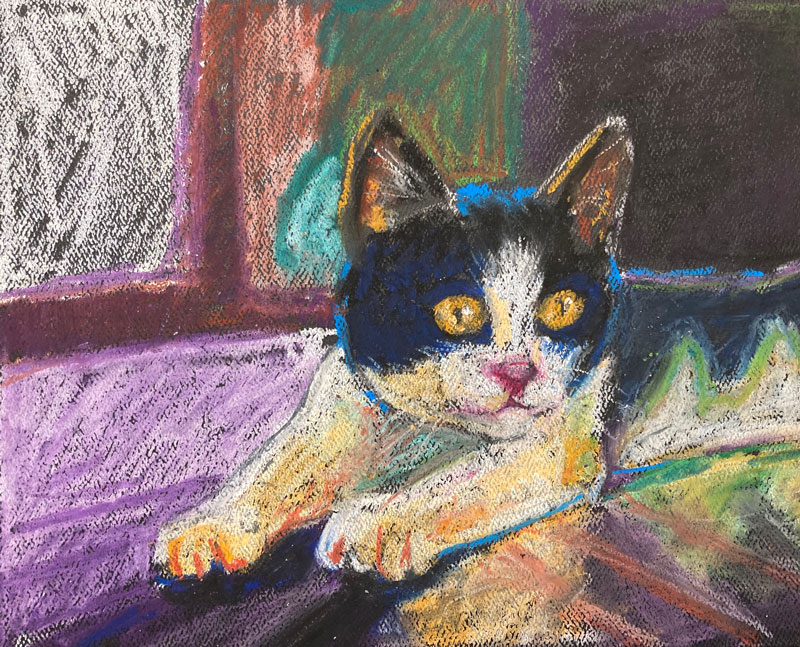
Working with Oil Pastels
It is a misconception that oil pastels function in the same manner as traditional soft pastels. In fact, even though both mediums share the word “pastel” in their name, they are uniquely different.
Like traditional soft pastels, oil pastels are manufactured in small sticks. But unlike traditional soft pastels, oil pastels layer and mix differently. The order in which colors are layered and applied must be considered since mixing will occur.
Oil pastels feature an oil binder which never fully dries. This means that oil pastels remain “workable” without any dust. However, oil pastels can still create a mess, but less so compared to their dusty counterparts.
Liquids can be used to act as solvents for both forms of pastel. Water can be used with traditional soft pastels, while solvents used for oil painting should be used with oil pastels.
As you can see, although these two mediums are both referred to as “pastels”, they are clearly different from each other.
Photo Reference
The reference photo for this exercise comes from Pixabay.com. When we compare the photo reference to the completed oil pastel drawing, we can see how much Ashley deviated from the local, observed colors of the subject. Here’s a look at the photo reference…
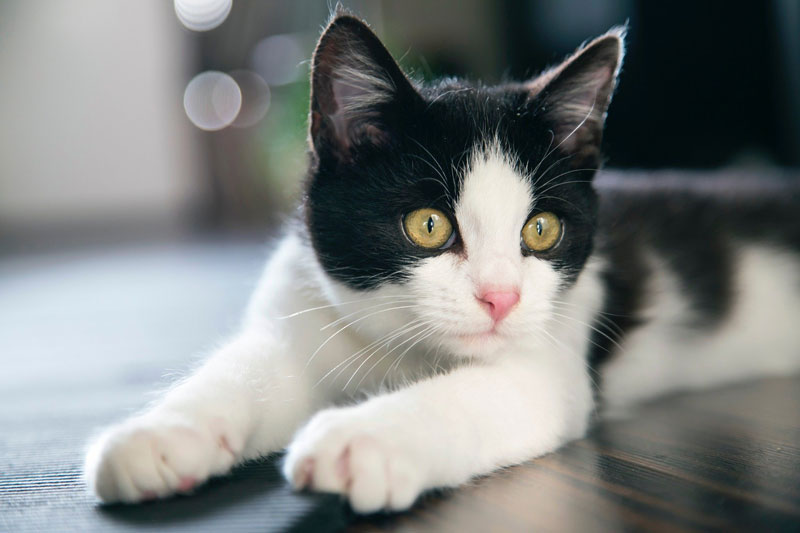
Recommended Supplies for Drawing with Oil Pastels
Like other art materials, there is a broad range of quality with oil pastels. However, fairly decent oil pastels can be had without much investment. They can be purchased at any art store and are often found at office supply stores as well. If you’re looking for professional oil pastels, like those produced by Sennelier, then you may have to order them.
Oil pastels can be applied to many different surfaces including canvas. Most artists apply oil pastels to a textured paper, like pastel paper, in order to build up layers of color.
Here are a few links to purchase recommended oil pastels and surfaces …(Some of the following links are affiliate links which means we make a small commission if you purchase at no additional cost to you.)
- Sennelier Oil Pastels (Recommended for professional results.)
- Cray Pas Impressionist Oil Pastels (Recommended for better results.)
- A drafting brush (Used to brush away oil pastel bits without smearing).
- Canson Mi-Teintes Pastel Paper (Textured paper that features two distinct sides – one with a heavy texture and one with a slightly smoother texture.)
Oil pastels are a wonderful medium for creating works fairly quickly. Mixing happens on the surface, so colors can be built up quickly. There is a bit of forgiveness, but loosening up is a must. The finished look of an oil pastel drawing can resemble one created with traditional soft pastels – but since these mediums differ so greatly, they should approached in different ways.
If so, join over 36,000 others that receive our newsletter with new drawing and painting lessons. Plus, check out three of our course videos and ebooks for free.


